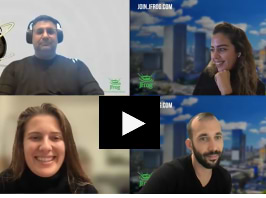Demystifying the SBOM’s impact on Secure Software Deployment @OWASP Bay Area Meetup
April 28, 2022
2 min read
We are so excited to announce that JFrog is a proud host for this month’s OWASP Bay Area Meetup! Two awesome talks are planned two with good old-fashioned Pizza and Drinks!
Talk #1
Demystifying the SBOM’s impact on Secure Software Deployment
With the White House’s cybersecurity executive order in May 2021, has the Software Bill of Materials (aka SBOMs), graduated from being a “nice to have” to a “must-have” global standard when developing and deploying secure software from the cloud? In a nutshell, SBOMs provide visibility into which components make up a piece of software and detail how it was put together, so it’s easy to determine if it contains security and compliance issues. In this talk, we’ll discuss • What exactly is an SBOM? • Securing your Software Supply Chain • Why SBOM must be a key element of your software development life cycle’s (SDLC) security and compliance approach • The misconceptions that exist around SBOMs • Insights and best practices on SBOM creation and usage.
Speaker:
WILLIAM MANNING Solution Engineering Manager Bill is a Solutions Architect with JFrog. He is also a mentor with TechStars, Matter, and NestGSV. He has successfully exited 3
companies and took one public in Australia. He is also currently helping various startups as an advisor. In his spare time, he likes to travel with his wife and two boys. He also plays guitar, loves the ocean, and is an avid cyclist.
Talk #2
Resilient Posture for Cloud-Native Apps, Defend Against Ransomware
The talk will focus on the concept of Resilient patching which could be attained by ZeroTrust and Defense in Depth.
Speaker:
● Founder/CEO araali Networks
● Co-Founder/VP Eng at Cisco Tetration Analytics ● Core Member, CSA (Zero Trust Expert Group) ● Engineering leadership at Aruba, Cisco, PacketMotion ● M.S., Johns Hopkins University ● B.Tech., Indian Institute of Technology, Kanpur





